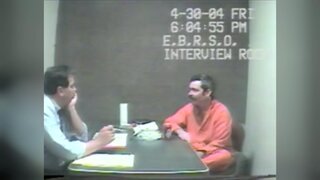Create a free profile to get unlimited access to exclusive videos, breaking news, sweepstakes, and more!
How Police Knew Baton Rouge Had Multiple Killers ‘In Hunting Mode’ At Once
A lead in the case came from an unlikely source: one of the suspected serial killers, Sean Vincent Gillis. In an interview with investigators, he dropped a bombshell revelation.
In the early 2000s in Baton Rouge, Louisiana, many women from various walks of life were found violently murdered.
“Serial Killer Capital: Baton Rouge,” a two-part special streaming now on Oxygen, explores how investigators determined that three murderers were separately preying upon women at the same time. How did officials come to this unsettling conclusion? Establishing links and connecting the dots between the victims became key to the urgent investigation.
The first arrest came in 2003, when Derrick Todd Lee was taken into custody. He was tied to the slayings of seven women by DNA evidence, a tool that has seen great advances in the past two decades. Serial killers typically follow a pattern, leaving a telltale mark in terms of who they target and how they murder. Lee had stabbed some victims and strangled others, so his inconsistent method made the case more difficult to solve.
Lee’s arrest was momentous. “For the city of Baton Rouge, it was a collective sigh of relief,” Dana Cummings, Prosecutor, E. Baton Rouge Parish, told producers of the Oxygen special.
RELATED: Who Were The Victims Of The Baton Rouge Serial Killers?
But that source of reassurance was shockingly short-lived. Months after Lee was arrested, more women were killed.
“We have these murders that are different happening in downtown Baton Rouge,” said Cummings.
These victims varied in terms of age, race, and affluence but were connected by the killer’s telltale mark: Their bodies had been mutilated. One woman’s leg had been sliced so deeply her bone was visible. Another victim’s hands had been removed, while another woman had an arm severed at her elbow. Prem Burns, former Prosecutor, E. Baton Rouge Parish, described the mutilations as “ritualistic cuttings."
"This is a totally different animal,” she told “Serial Killer Capital.” “They absolutely know at this point this is serial killer number two.”
Sean Vincent Gillis was arrested on April 29, 2004 and charged with three counts of murder. A tire track found near a victim’s body led police to Gillis, who confessed to five more murders. Gillis’ DNA was found to be a match to three women connected to his arrest.
In a recorded police interview obtained by “Serial Killer Capital,” Gillis called himself a “monster” who went into “hunting mode” in search of victims.
But even with Lee and Gillis behind bars, slayings didn’t stop.
“There were more female victims popping up around town,” Bryan White, Chief Criminal Deputy, E. Baton Rouge Parish Sheriff’s Office, told producers.
The fact that a number of victims had been posed and found in areas frequented by individuals with high-risk lifestyles led officials to question whether another killer was at large.
“All three of the victims appeared to be sexually assaulted,” said Cummings. “And all three of them were in areas where there were drugs, prostitution, high-risk areas.”
A lead in the case came from an unlikely source: Sean Vincent Gillis. In an interview with investigators, he dropped a bombshell revelation.
“Sean told me that while he was out there searching for a victim, he observed another hunter, another serial killer,” said Christopher Johnson, former Squad Sergeant, Baton Rouge Police Department. Gillis would give no further information.
The investigation into these three murders grew cold until December 2007. Following the attack of a woman who survived the brutal assault and identified her assailant, Jeffery Lee Guillory was was linked to two of the three victims by DNA and another through fingerprints. He was ultimately convicted of one murder.
In 2016, while awaiting his execution, Derek Todd Lee died of a heart disease at the age of 47. Sean Vincent Gillis and Jeffrey Guillory, meanwhile, are both serving life sentences in the Louisiana State Penitentiary.
To learn more about these cases, watch “Serial Killer Capital: Baton Rouge,” a two-part special streaming now on Oxygen.


































